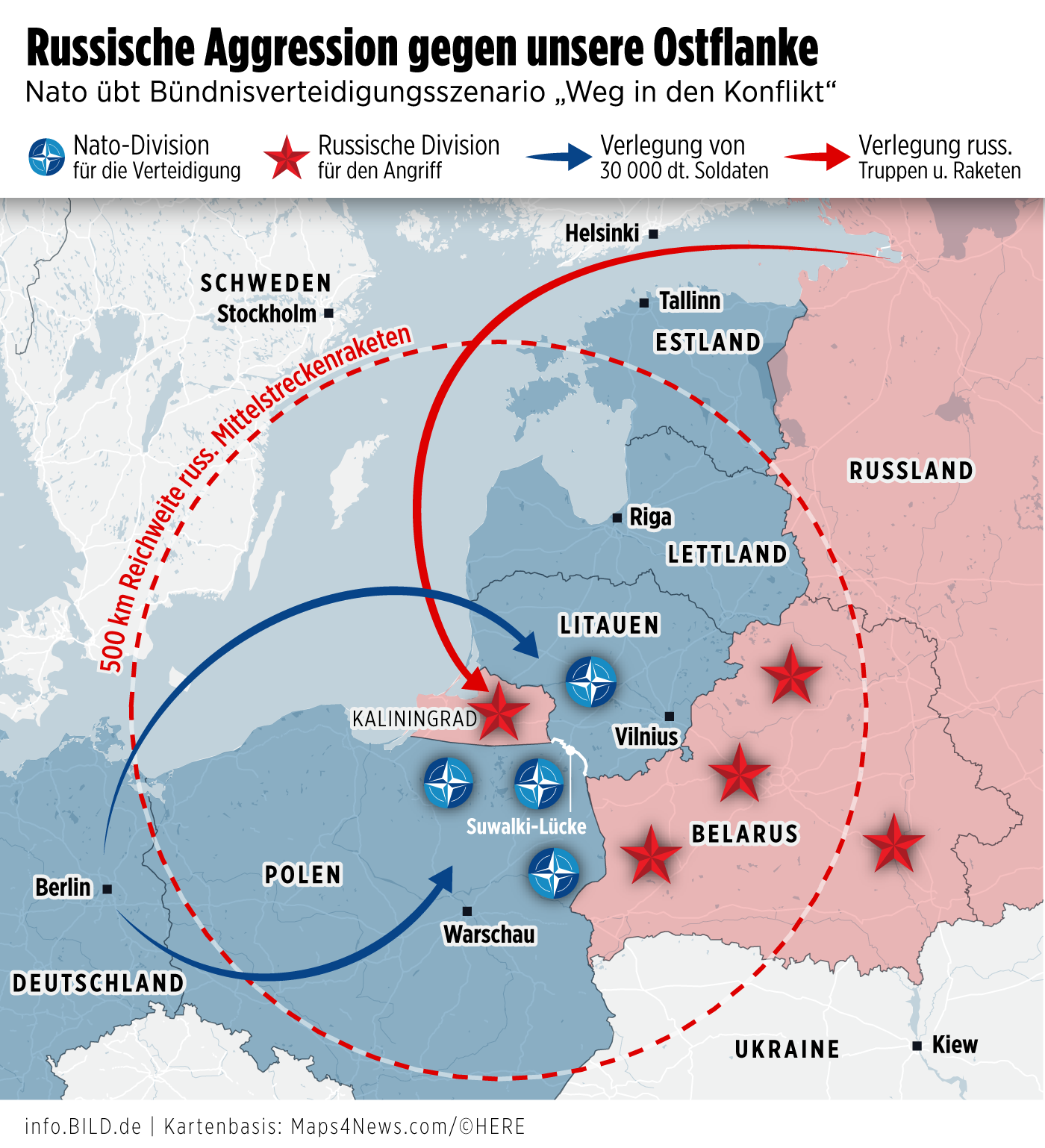International
The real German war plans with Russia for 2025

Will Russia attack Europe not this, perhaps, but next winter? Of course, we don’t know, but someone seems to be taking this seriously, even if, in the end , he can’t do much about it, at least in his own words.
The German newspaper Bild reported an excerpt from a German Defense Ministry document where the guiding points for moving toward a direct European conflict with Russia with direct German involvement are given.
This scenario is seen as a kind of extension or deepening of the Russian-Ukrainian war and is of great concern to the Bundeswehr, which knows full well that it is not prepared and, despite the intervening time, does not seem to be doing much, frankly, to prepare.
The classified, indeed secret, document speaks of the possibility of and response to an attack that would develop as a wraparound attack on the eastern side of NATO.
The scenario sees the development of military political confrontation month by month until it culminates in the summer of 2025. The newspaper avoids presenting some points because they remain secret. The whole maneuver is called “Defense Alliance 2025.”
▶︎ The Bundeswehr’s secret “Defense Alliance 2025” scenario begins in February 2024. Russia launches another wave of mobilization and draws into the army an additional 200,000 men on the Ukrainian front.
▶︎ The Kremlin then begins a spring offensive, supported by faltering Western support in the direction of Kiev, that achieves major successes by June 2024 and pulls the Ukrainian army back little by little. This part of the scenario appears likely.
According to the scenario, Russia’s attack on the West, at first covert and then increasingly overt, begins in July.
▶︎ Heavy cyberattacks and other forms of hybrid warfare, especially in the Baltic region, lead to new crises. Russia begins to incite ethnic Russian minorities in Estonia, Latvia, and Lithuania.
▶︎ Clashes break out, which, according to the scenario, Russia uses as a pretext to launch the large-scale maneuver “Zapad 2024” with 50,000 troops in western Russia and Belarus starting in September.

Uprisings in the Baltic countries
Following the pattern already followed in late 2021, Russia is using it for a massive deployment of troops on the border with Poland and Lithuania.
▶︎ According to the secret Bundeswehr document, the situation could escalate: In October 2024, Russia is moving troops and medium-range missiles to Kaliningrad and further arming its exclave with the propaganda lie of an imminent NATO attack. The Kremlin’s secret goal is to seize the Suwalki Gap, the narrow Polish-Lithuanian corridor between Belarus and Kaliningrad.
▶︎ According to the scenario, an artificially induced “border conflict” and “unrest with numerous deaths” would occur in December 2024 in the area of the Suwalki Gap, the narrow passage connecting Poland and the Baltic states.
▶︎ Just at a time when the United States may be more or less leaderless for a few weeks following Joe Biden’s possible removal from office, Russia is repeating its 2014 invasion of eastern Ukraine, but this time on NATO territory.
▶︎ Shortly thereafter, there will be an extraordinary meeting of the United Nations Security Council in which Russia will accuse the West of preparing an attack against Russia, and this will result in the presentation of a kind of international casus belli.
▶︎ According to the exercise scenario, an extraordinary meeting of the NATO Council would be held in January 2025, at which Poland and the Baltic states would signal a growing threat from Russia.
▶︎ Russia would once again propagandistically reverse the real threat situation and deploy additional troops to the Baltic states and Belarus in March 2025.
The Role of the Bundeswehr
In Belarus alone, the Kremlin would deploy two armored divisions, a mechanized infantry division, and a division headquarters, totaling more than 70,000 troops.
▶︎ In May 2025, according to the Bundeswehr scenario, NATO decides on “credible deterrence measures” to prevent a Russian attack on the Suwalki Gap from the direction of Belarus and Kaliningrad.
▶︎ On “Day X,” according to the Bundeswehr’s secret document, NATO’s commander-in-chief orders the deployment of 300,000 soldiers on the eastern flank, including 30,000 soldiers for the defense of Russia.
The conclusion is unknown
The scenario ends 30 days after X-day. At that point, more than half a million Western and Russian soldiers, armed to the teeth, will face each other around the Suwalki Gap. Whether Russia will be deterred by NATO’s deployment remains an open question in the exercise scenario.
A few weeks ago, German Defense Minister Pistorius spoke of eight years for the German military to prepare for defense. These scenarios should lead to a change in German strategy: in 2022, the news ran that Germany had ammunition for only 2 days of war against Russia, and it does not appear that this situation has changed in any way. After all, one does not prepare for a war with austerity, assuming one really wants to fight it.
Because after 15 years of Merkel and politically correct Social Democracy, there is doubt that Germans really want to fight for Scholz.






